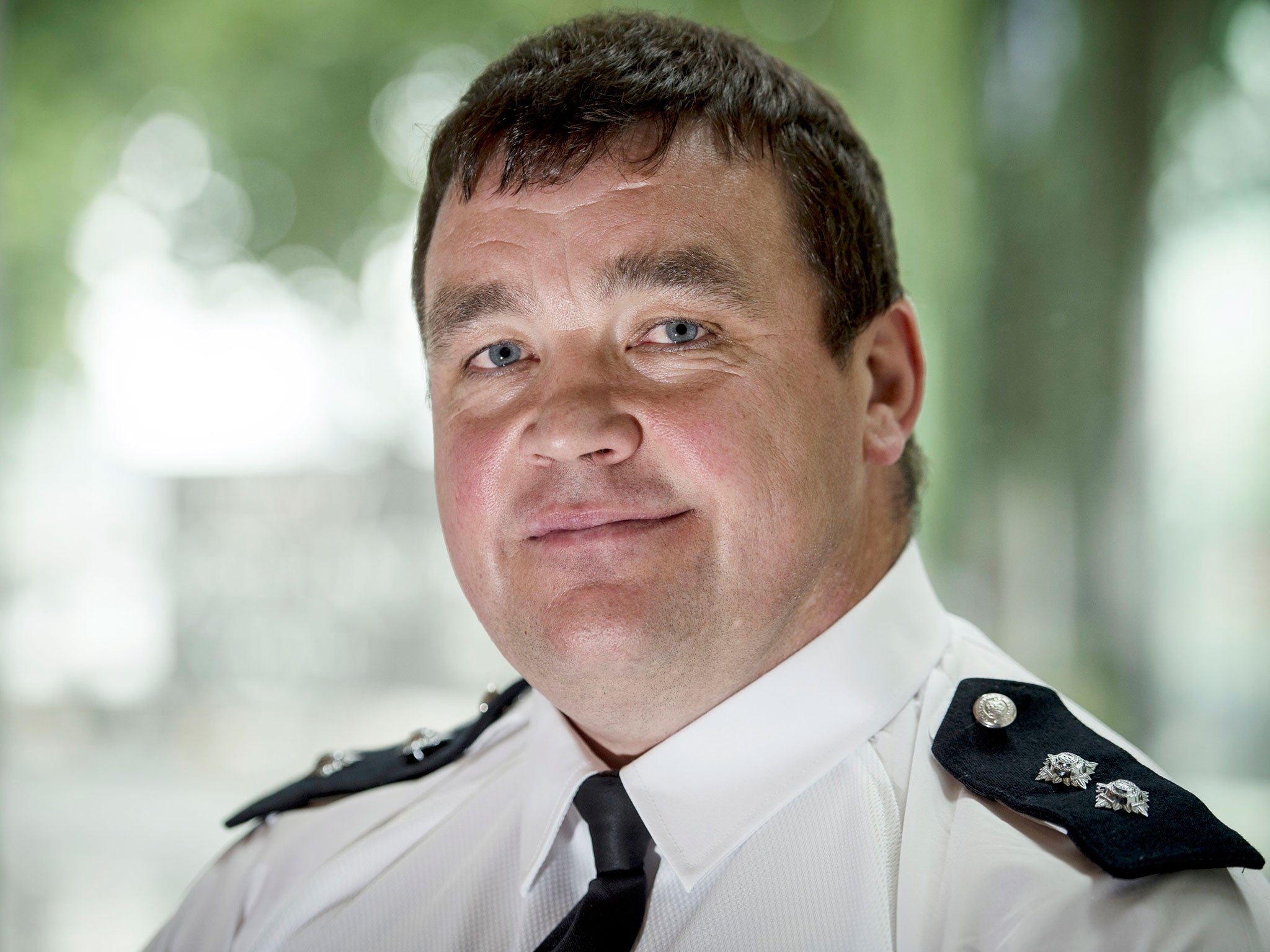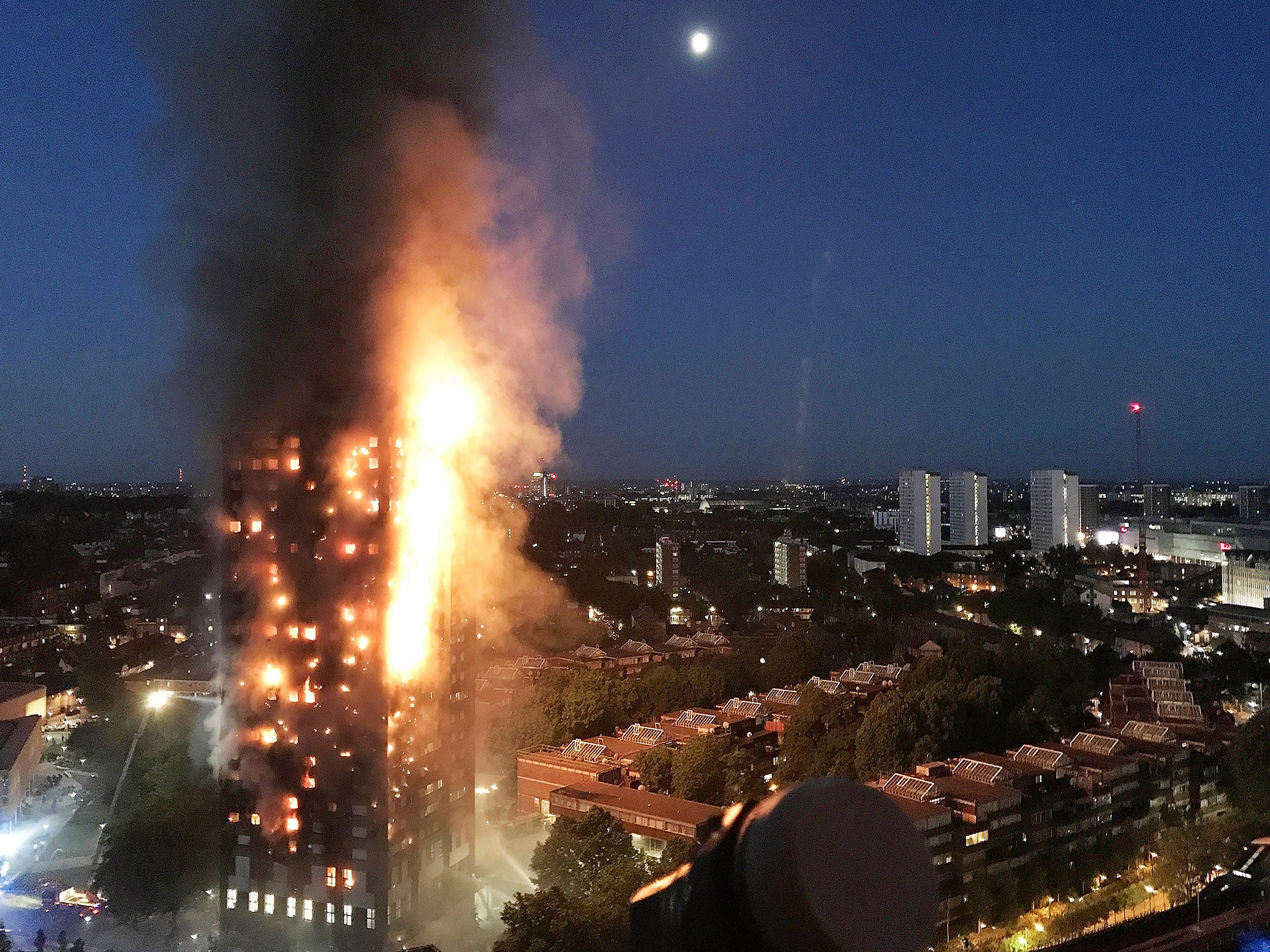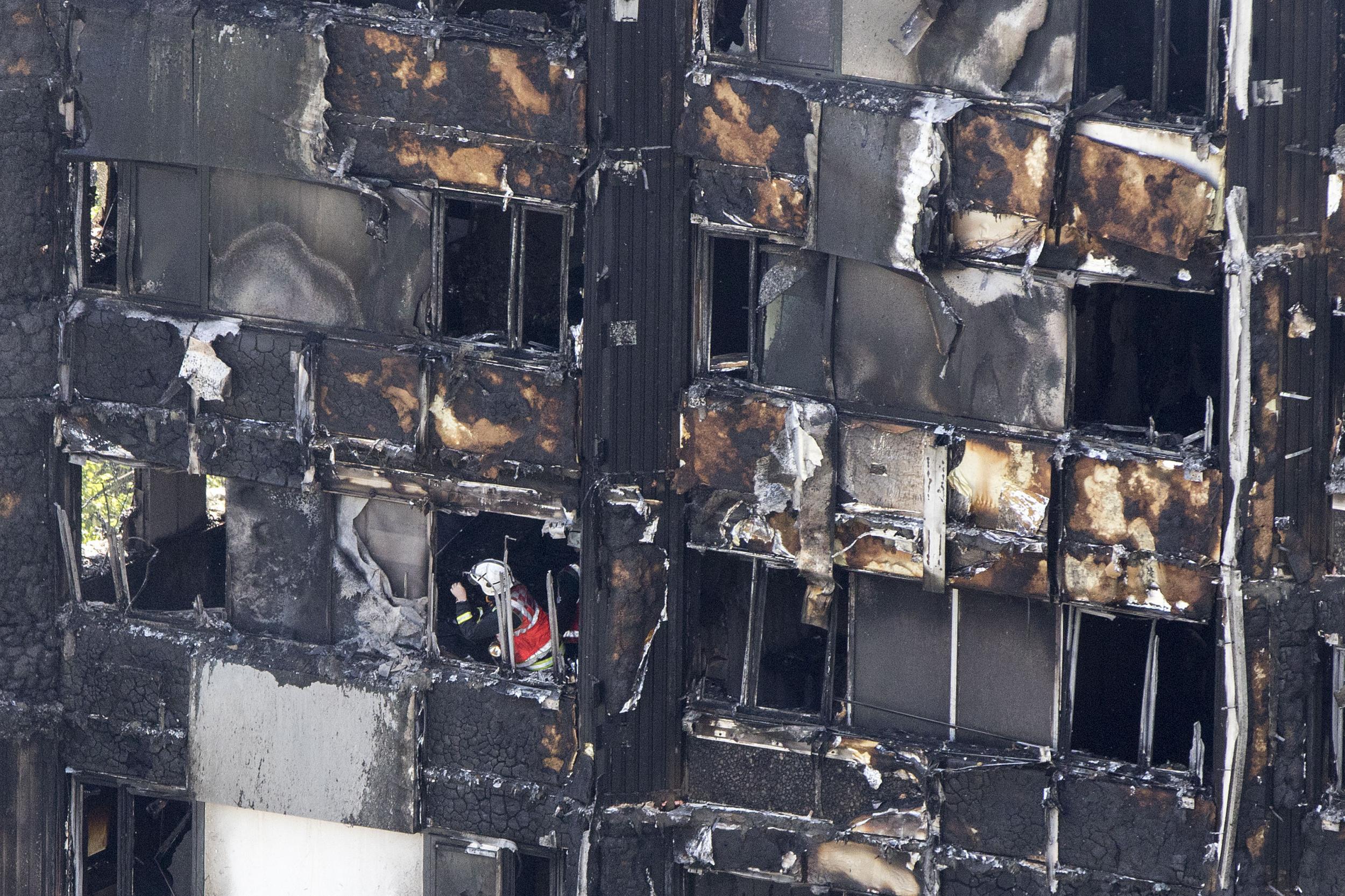Police officer among first to respond to Grenfell fire describes horror: 'It was like the building was melting'
Officer describes having to prevent colleagues and desperate relatives running into burning tower

One of the first police officers to respond to the Grenfell Tower fire has described the horror of watching the building “melting” as trapped residents pressed themselves up against windows screaming for help.
Inspector Nick Thatcher said he had to prevent fellow officers as well as desperate members of the public running back inside in attempts to save the victims.
“They were trying to help but there was nothing they could do,” he said.
"The theme for the night was managing the expectation of the public – it was frustration it was grief, it was anger, every sort of emotion you could imagine.
“People were on the cordon saying ‘my family are in there or my friends are in there, I want to do something’ but we had to make sure no-one extra put themselves at risk.”
Insp Thatcher described having to drag one of his own officers out of the burning building, who had to be treated for smoke inhalation.
“Some people were getting through [the cordon] and they were getting to the fire engine and looking for equipment,” he added.
“They didn’t know what they were doing but they had this overarching need to help because it’s their loved ones.”

Around 80 people are known to have died in the blaze on 14 June but only 34 victims have been formally identified, with the latest name released by police that of 61-year-old Hamid Kani.
Insp Thatcher said he had no idea of the scale of the tragedy that would unfold when he received a “concerning but not unusual” call from the fire brigade at around midnight.
But coming over Ladbroke Grove hill on his way to the blaze he saw fire shooting out of the lower floors and travelling up the side of the tower, putting a call out saying “we need everything”.
When he got to the scene and saw survivors staggering out of the building “the magnitude started to become apparent”, the 46-year-old said.
“Everybody was just awestruck, they were just standing, arms by their sides, head up, mouths open just staring at the fire,” Insp Thatcher recalled.
“And even in the short time it took me to drive less than a mile the fire had escalated and spread to the top two floors, you had to take a few seconds just to think ‘goodness, this is not normal’.”
As blazing debris fell, the inspector started to compare the devastation to the September 11 terror attacks, “thinking that at any second that building is coming down”.

“It was like the building was melting – I can remember being towards the base of the building and looked one way and when I looked back there was a big clump of burning things slightly behind me,” Insp Thatcher said.
“I honestly thought in the night that any second it was going to come down, and even when I left hours later I was still certain it was going to come down.
“Is it going to land on the sports field, that’s the best case – any other direction the other multiple-occupancy residences are going to go and anyone in there is going to die.”
The officer said “absolutely nothing at all” in his 23 years as a policeman prepared him for the scale of the horror.
“It was the whole range of human responses – it was everything, I thought I had seen everything but nowhere near,” he added.
“I remember saying that I’m not seeing the numbers I would expect – you would expect to see a stream of people coming out and there were maybe half a dozen people there.
“And this is a huge building and there just weren’t the numbers… Later on, the advice to the people still in there was changed from ‘stay where you are’ to ‘self-evacuate’ and I think just about everybody in uniform stopped when that went over the radio, just looked at the tower, and there was a collective slump.”
Mr Thatcher, who is married with two children, struggled for words describing some of what he witnessed through the night.

“You couldn't get away from it,” he added. “You could see, you could see... I won’t go into detail but everything from faces to lights.”
Insp Thatcher described how police started giving members of the public desperate to help jobs, with one woman giving out cups of tea and young men who “don’t necessarily see eye to eye with the police” giving shopping trolleys full of water to firefighters.
“The overt feeling is humbled, they’ve definitely come together,” he added.
“It’s very difficult, it’s impacted just about everybody in that corner of London and we are seeing people in our day-to-day work that need help because of it.”
Insp Thatcher did not leave the scene until after 11am the next day.
“I was fortunate in that I was so busy – that I didn’t have a great deal of time to stop – you realised the sun was suddenly coming up and it was still going,” he said, as hundreds of police from across London were drafted in alongside firefighters, paramedics, the Salavation Army and volunteers.
“With the sun you could see the smoke as well as the flames. It flew by, it absolutely flew by.”
When asked if anything else could have been done to save the victims, he replied: ”I’ve asked myself that a thousand times and will ask it a thousand times more.
“I’m confident that with the information we had at the time, and at the scene, we couldn’t have done any more.
”We had every fire appliance, every ambulance and every police officer were doing their jobs, we had everything but it just wasn't enough in those circumstances.”
Insp Thatcher compared his uniform to a “suit of armour”, adding: “There’s a skill in taking it off, putting it in your locker and going home.
“But it doesn’t go away, I didn’t really sleep for three weeks.
“I don’t think I will ever, ever forget and you wouldn’t want to but no-one has failed to turn up for work, everyone’s back – everyone’s doing what we’re paid to do.”
The Metropolitan Police has released haunting footage from inside the remains of Grenfell Tower, showing specialist officers trying to catch their breath as they climbed the blackened staircase past bright yellow floor numbers painted on charred walls.
Specialists from the Disaster Victim Identification Unit are conducting a “fingertip search, of all flats on all floors” as efforts to identify victims continue, seeing officers go through remains on their hands and knees using small trowels and sieves to find fragments of bones and teeth.
Commander Stuart Cundy, who is overseeing the operation following the fire at Grenfell Tower, said police were “still trying to fully comprehend” the human cost of the tragedy as a criminal investigation continues.
“For many people the events of that night will remain with them forever,” he added.
“Each and every one of us involved from the Met is determined to do all we can to return those who died to their families as soon as we can. Four weeks after the disaster, we remember all those who have been so deeply affected.”
A vigil was held on Wednesday evening in the shadow of the block’s blackened shell, the first of several commemorations expected as the one-month anniversary approaches.
Earlier in the day, inquests were opened for more of the victims at Westminster Coroner’s Court and a debate on the inquiry was held in the House of Commons.
The fallout from the disaster has been wide-reaching, with hundreds of families displaced, a clutch of local politicians resigning and tensions heightening between residents and the authorities.
Theresa May has ordered a public inquiry but campaigners have warned they will abandon the probe unless it is broadened to consider systemic problems alongside the immediate causes.
A nationwide safety operation is rushing to establish how many other high-rise buildings were encased in flammable cladding, which is partly blamed for the blaze's spread from a fridge-freezer throughout Grenfell Tower.
The Department for Communities and Local Government said 211 buildings across 55 local authority areas used material that failed its fire safety tests so far.
Additional reporting by PA
Join our commenting forum
Join thought-provoking conversations, follow other Independent readers and see their replies
Comments